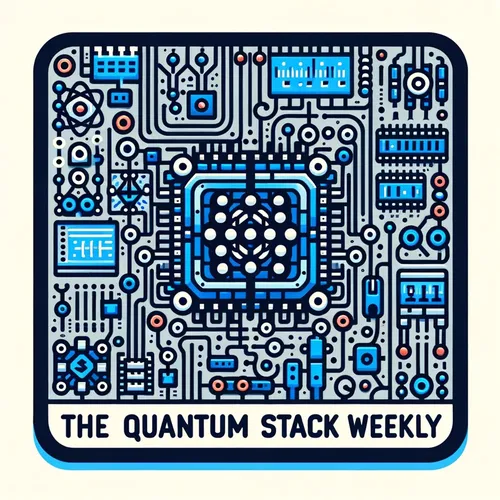Quantum Virtualization Unleashed: HyperQ Protocol and Quantinuum's 56-Qubit Leap
- Author
- Quiet. Please
- Published
- Wed 20 Aug 2025
- Episode Link
- https://www.spreaker.com/episode/quantum-virtualization-unleashed-hyperq-protocol-and-quantinuum-s-56-qubit-leap--67454768
This is your The Quantum Stack Weekly podcast.
Statistical impossibility. That’s what most classical engineers would call what I witnessed last night, in the quantum control lab in Broomfield. Imagine, for a moment, standing beneath a chandelier of ion traps—each one a jewel in a crown humming with possibility—and seeing the signatures of quantum supremacy flicker across the screens. Welcome to The Quantum Stack Weekly. I’m Leo, your Learning Enhanced Operator, and today, I’m inviting you inside today’s most extraordinary quantum leap: Quantinuum’s 56-qubit trapped-ion computer and the debut of the HyperQ quantum virtualization protocol.
Here’s the news that has electrified a global field: Just yesterday, Columbia Engineering unveiled HyperQ, a cloud-style virtualization layer that allows multiple users to share a quantum processor at once. For years, quantum hardware was the ultimate VIP room—no reservations, just one exclusive guest at a time. HyperQ changes all that, bringing dynamic scheduling and resource sharing to the quantum stack, much like AWS and Azure did for classical infrastructure. Tao, Columbia’s chief architect of HyperQ, summed it up crisply: “This changes the game for how quickly we can tackle some of the world’s most challenging problems.” That speed-up in accessibility frees up these million-dollar machines for more researchers, and could well be what transforms quantum from boutique to ubiquitous, as IBM or Google roll out support for the protocol soon.
But let’s wander back to that lab, and why this matters. Quantinuum’s 56-qubit system recently set a new world record for system fidelity in random circuit sampling—a needle threaded by quantum entanglement and coherence. Collaborating with JPMorgan Chase, their team executed quantum algorithms previously out of reach, outpacing even the legendary thresholds set by Google. Not only did the H2-1 processor solve circuits 100 times faster than Google’s 2019 attempt, it did so using 30,000 times less energy than even the best classical supercomputers. Think of two marathoners: one crossing the finish line while the other is still at mile two—and the first barely breaks a sweat.
Here's the technical heart: HyperQ’s breakthrough is virtualization for quantum, splitting physical qubits into logical user environments in real time, something once dismissed as theoretical. Virtual machines for quantum logic, instantly drawn and redrawn. For researchers in logistics, finance, or chemistry, this means burst access to quantum cycles and unprecedented possibilities for experimentation—even as the chilly, fragile ions inside their trap dance along magnetic potentials, never truly alone for a moment.
The broader implications? Imagine AI models that learn not just from billions of classical weights, but from a tapestry of entangled qubits, tuned in parallel by thousands of co-existing users. We’re on the cusp of quantum democratization—where every click, every query, every simulation could be amplified by the power of the multiverse.
I’m Leo, and this is The Quantum Stack Weekly. If you’ve got questions or a quantum topic burning a hole in your curiosity, email me at [email protected]. Subscribe for your weekly dose of entanglement, and remember, this has been a Quiet Please Production. For more, visit quietplease.ai. Stay quantum.
For more http://www.quietplease.ai
Get the best deals https://amzn.to/3ODvOta
